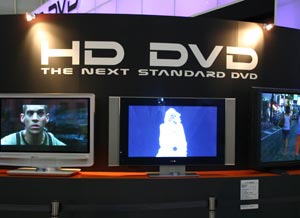To date, most people compare Blu-ray and HD DVD based on storage capacity, cost, and the number of films available for these new-generation optical disc formats. However, computer manufacturers also play a crucial role in determining which technology will prevail.
 |
| Source: blu-ray |
Howard Locker, the new Chief Technology Officer of Lenovo Group (China), currently regarded as the third-largest computer manufacturer in the world, asserts: “The three main sources for the new generation of DVD discs will be the computer industry, consumer electronics, and gaming systems. In terms of volume, computers currently account for over 50% of the market, thus we will have a significant voice in determining the winner in the DVD format war.”
Most computer manufacturers, including Lenovo, are not fully committed to either technology and prefer to wait and see. Dell, recognized as the world’s leading PC manufacturer, has decided to support Blu-ray, while Hewlett-Packard has announced that it will back both formats.
At the Computex 2006 exhibition, held in Taiwan from June 6 to June 10, Acer showcased four computer models equipped with HD DVD drives. However, a spokesperson for the company mentioned that they would also support Blu-ray once drives in that format become available on the market. The laptop specialist, Asustek, also only introduced laptops with HD DVD drives at the exhibition.
“Currently, we cannot find a source for Blu-ray equipment. We hope some suppliers will release products this month,” said Vicki Hsiao, a marketing specialist at Asustek.
Hsiao also acknowledged that computers supporting HD DVD or Blu-ray will cost several hundred USD more than standard DVD products. This will likely result in relatively low sales for devices using the new generation DVD technology this year.
CMC Magnetics, the largest optical disc company in the world today, is also producing products in both formats, but Chairman Bob Wong stated that Blu-ray will launch about six months later than HD DVD. Both types of discs are currently priced at $20 and are expected to decrease as production increases.


















































